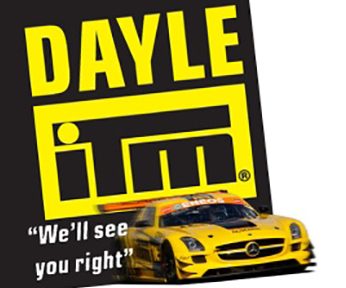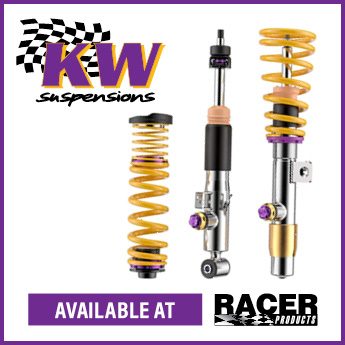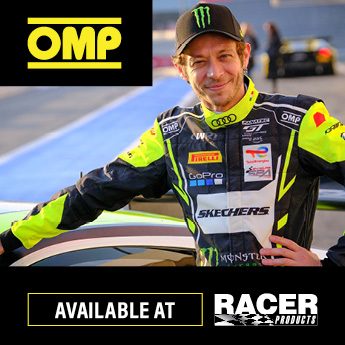One of the key themes of this weekend’s New Zealand Grand Prix is the return of numerous stars from the event’s past. These include former winners Greg Murphy, Daniel Gaunt, and Kenny Smith — plus racers formerly synonymous with the event, like Shane van Gisbergen.
The event is noted for its history as a race strongly connected to some of the biggest names in Formula 1 past and present (former winners Stirling Moss, Jack Brabham, Jackie Stewart, and Keke Rosberg all included), but there are also plenty of winners who went on to different things, or simply had their achievements in New Zealand become overshadowed. As we prepare for the 66th running of the event this Sunday at Hampton Downs Motorsport Park, VelocityNews looks back at some of the lesser-remembered former winners.
1. Lance Stroll — 2015

The most recent name on this list came and went from the domestic open-wheel series with a title in his back pocket. Lance Stroll’s championship winning 2015 campaign with M2 Competition was a relatively dominant one, seeing him win the title over Brandon Maisano by more than 100 points.
At the time Stroll was just another kid (although admittedly, one everyone knew had wealthy backing). It was over the next two seasons in Formula 3 that he started to make a name for himself — in part for the wrong reasons following a spate of crashes and questions about whether he was any more than a pay driver. These questions weren’t quelled by an utterly dominant Euro F3 title the following year, and they certainly didn’t disappear when Stroll broke into Formula 1 with Williams in 2017.
Despite having three podiums to his name, Stroll is still best known today as being ‘a pay driver’. But, the Canadian’s success is undeniable, and it started in New Zealand.
2. Fabian Coulthard — 2002

English-born racer Fabian Coulthard is best known for his antics in touring cars, having been part of the rolling Supercars circus since 2003. But before this he was a regular in Formula Ford — both in New Zealand and the UK.
For a brief period between eras, the NZ Grand Prix was awarded using the Formula Ford formulae. The venue was also somewhat unorthodox; Teretonga Park in Invercargill. This saw some of the ‘old guard’ reverting back to their roots against the ‘next generation’ of the time. Coulthard was unstoppable. He entered the weekend having been unbeaten in the regular season, then topped qualifying and the shootout.
Coulthard’s two closest rivals in the race were a pair of Americans who had flown out for the event; American Le Mans regular Bryan Sellers and eventual Nascar star AJ Allmendinger. Kenny Smith, Nick Ross, Nelson Hartley, Daniel Gaunt, and Chris Pither were among the other drivers in a stacked field.
3. Frank Gardner — 1972
For a period in the 1970s, the Grand Prix was swept by Aussie racers that had crossed the Tasman. These included Frank Matich, Niel Allen, John McCormack, Warwick Brown, and Frank Gardner. Often spotted in pit-lane wearing his favoured white bucket hat, Gardner defied a relatively poor background to become one of the first Australian racers to successfully take on the European racing circuit.
This started in the mid-1960s with the British Saloon Car Championship, although somewhat uniquely he would generally race open-wheelers and touring cars in the same season. By the time he flew to NZ and won the Grand Prix in 1972, he was already a star with two BSCC titles to his name, and a European Formula 5000 championship win, too — having comfortably beaten Formula 1 ace Mike Hailwood to the crown.
Hailwood was unsurprisingly his closest rival at the Grand Prix, in a grid that also included Teddy Pillet, David Hobbs, Kevin Bartlett, Robbie Francevic, and Kenny Smith (again). Sadly, the race also marked the passing of local driver Bryan Faloon.
4. Prince B. Bira — 1955

The New Zealand Grand Prix’s reputation as a race of worth for international stars was next to immediate. In fact, it only took three runnings of the event for someone from outside of Australasia to claim the win.
The late Prince Birabongse Bhanudej Bhanubandh, also known as Prince Bira of Siam or Prince B. Bira, won the event in 1955 at Ardmore while driving a Maserati 250F. As his name suggests, he was a member of the Thai royal familyThe only other driver from outside of New Zealand and Australia, Peter Whitehead of the UK, finished second in a field that also included Jack Brabham and Lex Davison (grandfather to Supercars regulars Will and Alex Davison).
Both Bira and Whitehead were high-quality scalps for the event, given each was a Formula 1 star of the time. Bira’s racing career is a fascinating one, perhaps fitting of a movie some day. Random factoids; he once purchased a Delage from Dick Seaman, Thailand’s Bira Circuit is named after him, and he was the first and only driver of South East Asian descent to compete in Formula 1 until the arrival of Alex Yoong.
5. Roberto Moreno — 1982

There are several distinct eras of the New Zealand Grand Prix, and in the mid- to late-1980s it was the era of American drivers and Formula Pacific. The slew of winners from the Americas didn’t start with a North American, mind you, but with cheeky Brazilian Roberto Moreno.
At 23 years of age, he arrived in New Zealand in the midst of a whirlwind of sorts. On one hand he’d proven himself to be good enough to hit Formula 1 thanks to outright victory at the famously competitive Formula Ford Festival in the UK. On the other hand, he was nearly penniless.
Victory in three out of the four Kiwi races (including the GP) set Moreno on course for the Australian Grand Prix the next year, and victory in that eventually gave him more weight and backing to climb the European ladder, eventually to a colourful career in Formula 1 and CART. Moreno actually returned to New Zealand last year — watching the Brazilian driver he was mentoring, Igor Fraga, win the TRS title and an NZGP crown of his own.
6. Teo Fabi — 1979

In 2016, Lando Norris broke an inexplicable Grand Prix drought, becoming the first driver of European descent to win the race in 34 starts and 37 years. The last European to win? Formula 1 driver Teo Fabi.
Born in Milan, Italy, Fabi clearly enjoyed his Kiwi exploits. The previous year, he won the New Zealand Formula Pacific title, and in 1979 he came back for more. Admittedly, the GP grid wasn’t the most well supported in history, but there were some quality names present — including Larry Perkins, Swede Eje Elgh (who went on to beat Mike Thackwell in F2 and become a factory Toyota driver at Le Mans), and Brett Riley.
Fabi had two stellar seasons in European F2, before embarking on a five-year Formula 1 career punctuated by two podium finishes. Other eventual career highlights include two 24 Hours of Le Mans podiums (each with a blue-chip factory effort; Jaguar and Peugeot), and pole at the 1983 Indianapolis 500.
7. Simon Wills — 1998 / 1999
Those who best remember Simon Wills for his fleeting stint in the Supercars championship would do well to look into his open-wheel past. For a brief period, Wills was as good as anyone else competing in Formula Holden on either side of the ditch. This was big news at the time, as the series had decent momentum behind it. Remember, Scott Dixon, Mark Skaife, Craig Lowndes, Greg Murphy, Rick Kelly, Jason Bright, Jason Bargwanna, and many more came through these cars.
Before romping home to two Formula Holden titles in Australia (winning all races in the 1999 season bar two), Wills won two local GPs in a row. Curiously enough, both were contested at Mike Pero Motorsport Park in Christchurch — a move that hasn’t been repeated before or since.
Wills’ 1998 win was particularly notable, and anything but a gimme. He beat Dixon off the line, only for the eventual IndyCar legend to get back by him. After the pair enjoyed a tit-for-tat tussle in greasy conditions, Wills ended up on top, with Murphy completing a very interesting podium.
8. Andy Booth — 2000

Immediately following Wills’ wins was another racer who’s perhaps best remembered these days for a career in V8s; Andy Booth. Like Wills, Murphy, and the host of other extremely talented Kiwis trying to find their home in motorsport in the late 1990s, Booth aimed overseas Indy Lights, in his case.
His turn-of-the-millennium GP win helped set the wheels in motion. It came after an impressive opening season in Formula Holden over the ditch, where he’d finished ninth overall (just ahead of Steve Owen), and helped him win the Tasman Cup — a Trans-Tasman title for the four-race Kiwi series. Sadly his time in Indy Lights was very brief, a credible sixth in his one and only race in the series a feat never to be repeated.
Booth’s GP win was one of the comfiest of the era; the Aucklander finishing more than 10 seconds ahead of Matt Halliday, Paul Dumbrell, and the aforementioned Owen. The most interesting name on the grid? Emerson Newton-John, nephew to Olivia Newton-John and a rapid driver in his own right.
9. Hamad Al Fardan — 2006
The 2006 race was the start of the current era; the first GP held under the Toyota Racing Series umbrella. But, the win didn’t go to anyone from the form guide of the day (the Daniel Gaunts, Brendon Hartleys, or Brent Collins’ types), but instead to one of the category’s first overseas racers.
Bahrain’s Hamad Al Fardan took part in two TRS seasons, claiming the GP title in 2006 and then winning a few races in 2007. Consistency was rarely on his side, but when the stars aligned he was able to edge the short-odds-favourite Gaunt by just over a second. Two other names from this weekend’s GP, Ken Smith and Chris van der Drift, were also in the race but failed to finish.
Al Fardan eventually made it all the way to GP2, having hopped and skipped from Formula BMW Asia, to British F3, to Asian F3. Although GP2 was still somewhat in its infancy when Al Fardan arrived in 2008, it packed quite the grid (Kamui Kobayashi won the title over Jerome D’Ambrosio. Future F1 champ Nico Hulkenberg was there, too). Al Fardan finished 20th in the points, and hasn’t raced since.
10. Dave McMillan — 1981
Many of the tails detailed here are stories of what if; drivers who clearly had the talent to go toe-to-toe with anyone else, but in most cases ran out of funds to have a proper crack at open-wheelers. Dave McMillan is another of these ‘what it’ stories, although his is slightly different.
Having finished second the year prior to Steve Millen, Dave McMillan came home ahead of David Oxton and Millen. It was just reward following three domestic Gold Star championship wins in the years prior. By this point he was already attacking the American scene hard in Super Vees and looked destined to take on Indy Lights and potentially IndyCar.
Sadly, a serious accident cut all of this short. Thankfully he persevered with the sport in a management capacity. Up until recently in fact he was still connected to the GP, via the title-winning Victory Motorsport team. McMillan’s 1981 season was documented in a fantastic documentary called Contact — Turn of the Wheel. It can be watched in full online at NZ On Screen and above on YouTube. Well worth a watch.


















What about Stan Jones, didn’t he win in around 1953??. Cheers Simmo. 🏁🏁🇦🇺🇦🇺
Stan won in 1954 ,the inaugural race at Ardmore .